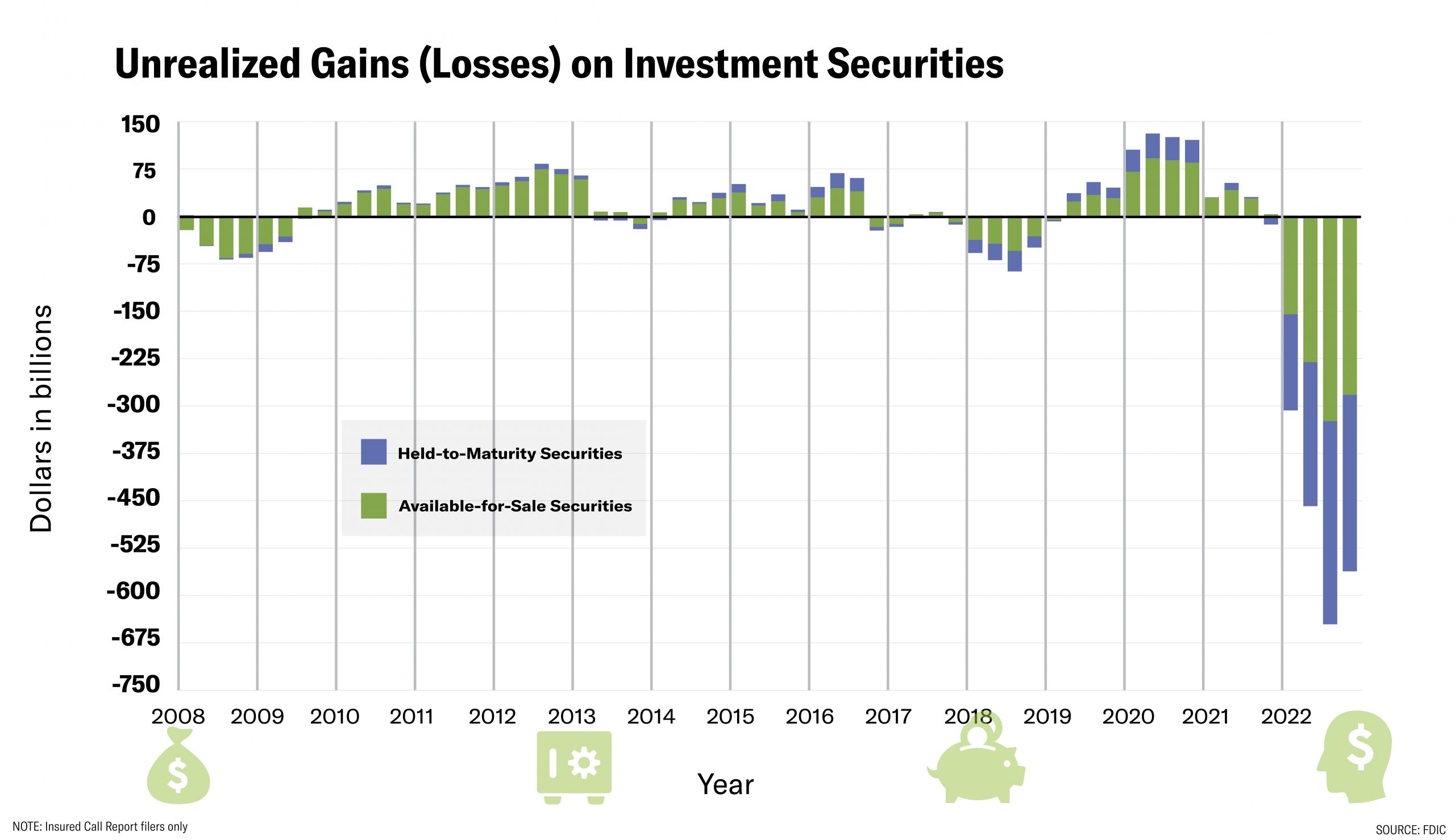Fallout from the Silicon Valley Bank collapse has directed attention to a $620 billion ticking time bomb in the banking system that has the potential to spell doom for the financial system.
SVB’s meltdown was partly caused by a chasm between its assets and what they were worth in the market. Eventually, SVB sold some of those assets, spooking investors and triggering a run on the bank. But SVB isn’t alone, as banks across the United States were sitting on $620 billion in unrealized potential losses at the end of last year, per the Federal Deposit Insurance Corporation.
SILICON VALLEY BANK COLLAPSE: U.S. OFFICIALS REPORTEDLY WEIGH BACKSTOPPING DEPOSITORS
That hole illustrates why authorities at the Federal Reserve, the Treasury Department, and the FDIC were so eager to stave off contagion or panic spread from SVB’s demise across the banking sector.
The reason for this predicament is that banks compiled a plethora of bonds and treasuries during times when interest rates were hovering near zero. But now, the Federal Reserve has begun jacking up rates in an effort to combat inflation, which has caused many of those assets to plunge in value.

This is because higher interest rates mean that new bonds accrue higher rates of returns for investors. As a result, older bonds have comparatively lower rates of return, rendering them less desirable for investors and therefore triggering a plunge in the value of older assets.
A consequence of the $620 billion unrealized potential loss phenomenon is that banks may quickly find themselves with less cash on hand than their books might have suggested.
Taking note of the liquidity needs of banks, the Federal Reserve announced plans to offer banks a facility to help them meet depositor withdrawals Sunday. The government has also moved to backstop depositors at SVB in the hope of curtailing panic from its demise from rippling across the industry.
$620 billion of unrealized losses, overall equity 2.2 trillion. If a run on the banks would happen it could be fatal even for several large US banks like JP Morgan and Citi. This crisis isn’t over. The US Treasury simply bought some time. pic.twitter.com/2xNvfIrN9b
— Kim Dotcom (@KimDotcom) March 13, 2023
The FDIC guarantees deposits up to $250,000, but many SVB deposits eclipsed that threshold. The government announced plans on Sunday to back those deposits of over $250,000 as well.
CLICK HERE TO READ MORE FROM THE WASHINGTON EXAMINER
SVB caused panic among investors last week when it revealed that it sold treasuries at a loss, inciting a run on the bank. On Thursday, customers withdrew $42 billion in a single day. For comparison, Washington Mutual “lost $16 billion dollars over 10 days” during the financial crisis of 2008, according to Sen. Mark Warner (D-VA).
The bank was the 16th largest federally insured bank and was taken over by regulators Friday after announcing it needed to raise over $2.2 billion to stay solvent.




